Kelsey Grammer, David Oyelowo, and Matt Bomer Celebrate the Endless Search for Artistic Authenticity at IndieWire’s Consider This Event
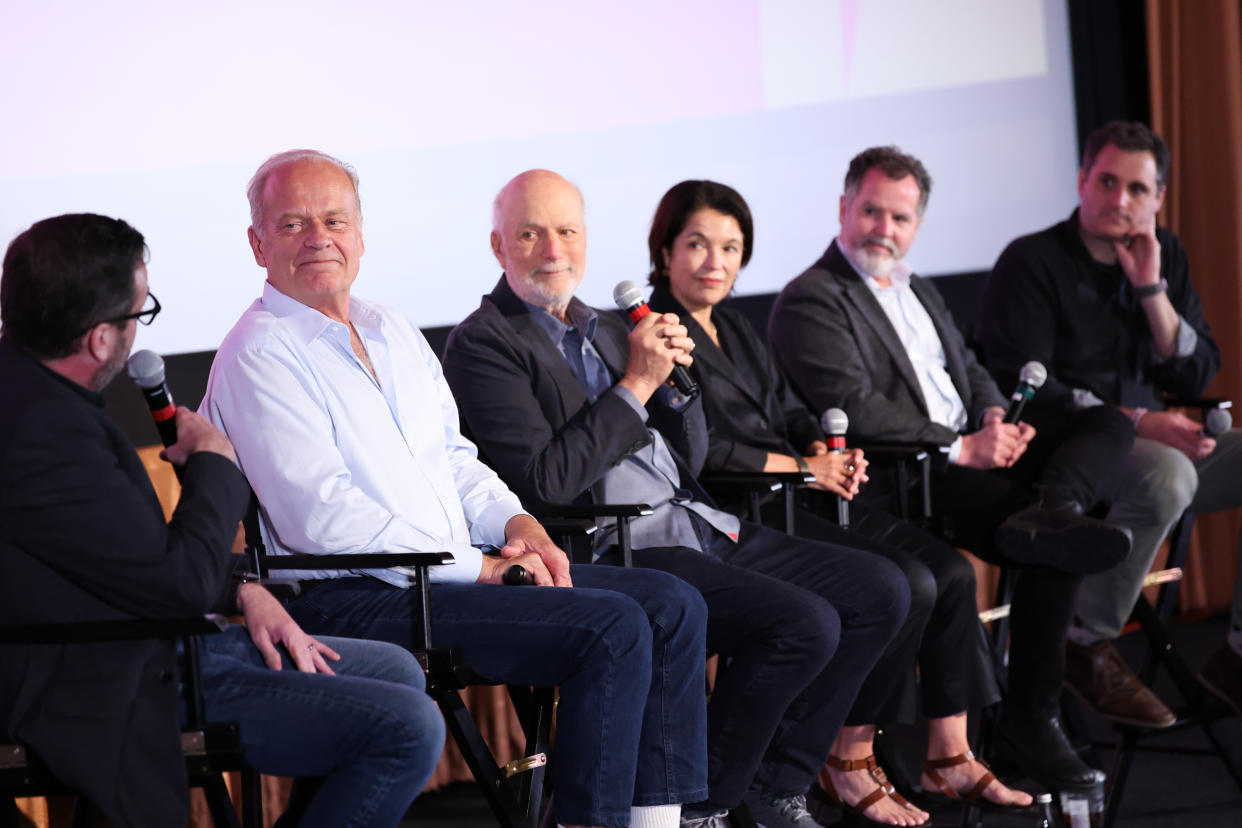
The mix of actors, showrunners, directors, costumers, production designers, composers, and VFX artists in attendance at IndieWire’s Consider This FYC event, produced in partnership with Paramount, reflected the unique blend of skillsets that have to come together to create a hit show. Artists from properties as varied as “Star Trek,” “Frasier,” and “Lawmen: Bass Reeves” to “Fellow Travelers,” “Colin from Accounts,” and “A Gentleman in Moscow” convened at The Grove in Los Angeles to discuss the painstaking process of delivering the most authentic possible shows to their audiences. And while no two stories were the same, everyone seemed to agree that great art happens at the intersection of extensive preparation and serendipitous timing. (Return to IndieWire for videos of the full panels later this week.)
The day kicked off with a panel celebrating “Fellow Travelers” featuring creator and executive producer Ron Nyswaner, star and executive producer Matt Bomer (who was just an IndieWire Honoree), director and executive producer Daniel Minahan, and composer Paul Leonard-Morgan. The collaborators spoke about their lengthy journey to get the miniseries, based on Thomas Mallon’s 2007 novel of the same name, greenlit and why they never lost faith in the powerful gay love story.
More from IndieWire
How Camila Mendes Proved to Herself and Others 'I Actually Really Know What I'm Talking About'
Julia Louis-Dreyfus, Without Hesitation, Says 1986's 'Troll' Is Her 'Worst Movie'
“It’s one of those projects we all knew was bigger than any one person involved in it,” Bomer said. “It felt like it was a story that really wanted to come through. So I just maintained trust that it would happen at the right time. It was years, and I was taking jobs to literally try to incentivize Showtime, that I didn’t necessarily want to do, just to try and get the green light for this. But I knew Ron’s passion and talent and this beautiful script he was writing were going to carry the day for all of us.”
Nyswaner echoed Bomer’s sentiments, but explained that the long wait only energized the creative team and made the story feel more timely when it was finally time for the cameras to roll.
“We were ready. It had been a three year journey with Matt, and then we had Dan and we were just ready to go,” Nyswaner said of his eagerness to make the show after it finally came together. “I think also it was the political process. There’s an important plot about Joseph McCarthy and Roy Cohn and their prosecution of homosexuals through the government. And Roy Cohn, as you all may know, was the mentor to one of our current presidential candidates.”
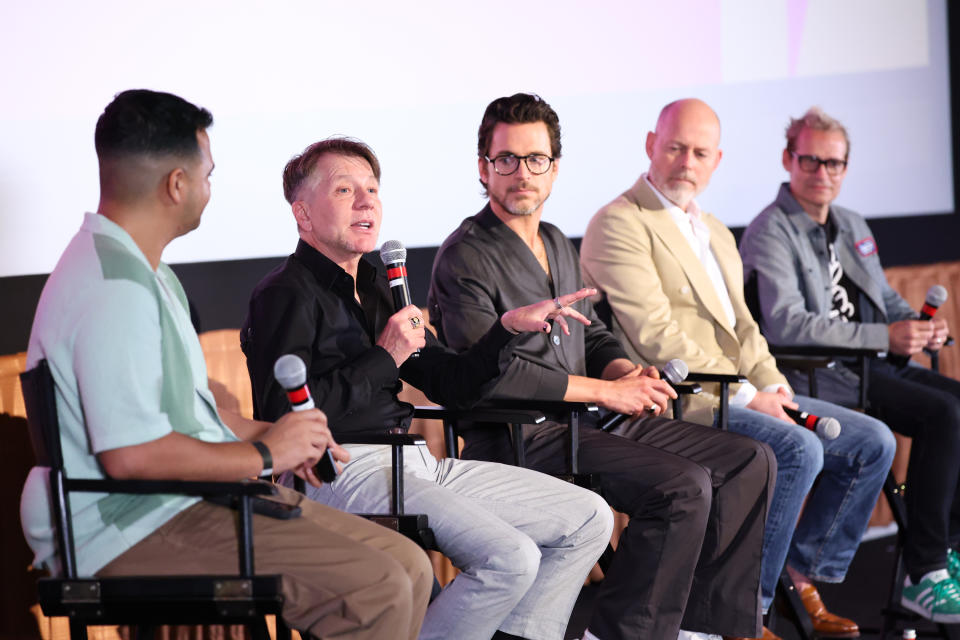
The team agreed that the relevance of the source material, which begins in the 1950s before spanning multiple decades, prompted them to lean away from certain aspects of period production value. Both Minahan and Leonard-Morgan spoke about finding ways to fuse elements of period pieces with modern touches in a way that makes audiences realize that our history isn’t as far away as we sometimes like to think.
“The thing that was really important to me was that we stuck to the immediacy of the material,” Dan said. “That we were not making a series that was pretending to be filmed in the 1950s. I wanted it to be accessible to people.”
“From my point of view, it’s not about the multi-decade story because the soundtrack doesn’t change stylistically,” Leonard-Morgan added, explaining how he added 1950s touches to a debaucherous 1970s threesome scene to help the show maintain a unified tone. “I still recorded the quartet, we reversed it. For the threesome in Episode 7, it’s like ‘Well how am I gonna do this? You have a Funkadelic track playing over, they’re all high on drugs, it’s going to sound really weird to have a quartet going underneath it. So I recorded the quartet, then reduced it, put it through a phaser, and it’s just gradually coming in underneath it. So that way you subliminally tie it in with the soundtrack.”
From there, the discussion blasted off into space when “Star Trek” franchise steward Alex Kurtzman, who co-created and produces both “Star Trek: Discovery” and “Star Trek: Strange New Worlds,” joined the shows’ VFX supervisor for a panel moderated by IndieWire’s Christian Blauvelt. The two men discussed the renaissance that Gene Roddenberry’s legendary sci-fi franchise has enjoyed on Paramount+ in recent years, and how they strive to find a balance between honoring its extensive history in an authentic way and making their own additions to the canon.
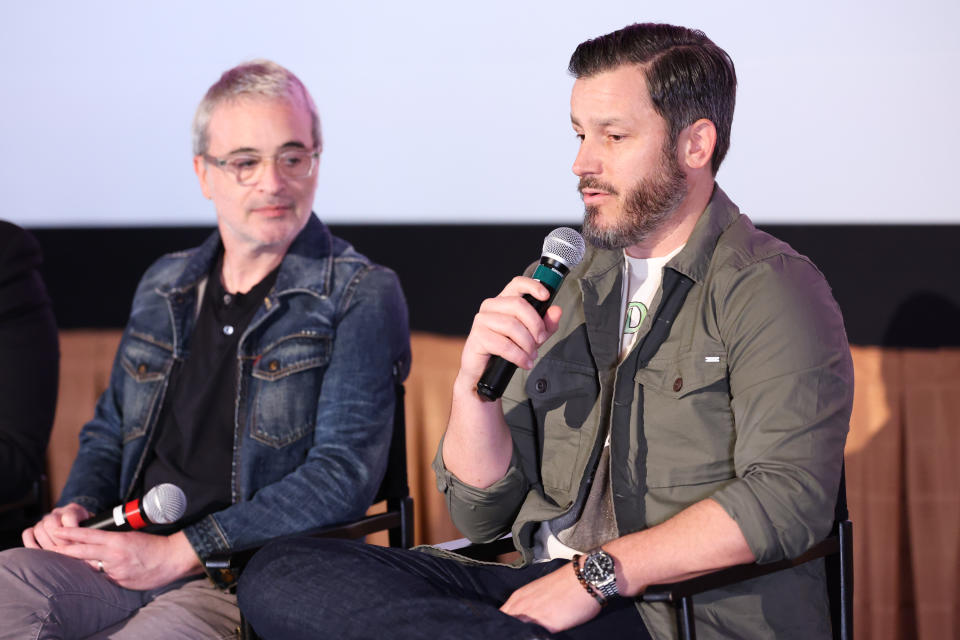
“Fan service can be very annoying,” Kurtzman said. “If you do it wrong and you’re tipping your hat to it but you’re not actually giving it any depth, it actually feels like it achieves the opposite of what you’re trying to do. So you need to feel like you’re coming up with a very strong reason to do it.”
Zimmerman explained that making great “Star Trek” shows requires him to have one foot in the past and another in the future at all times, with the knowledge that the endlessly passionate fanbase will always be ready to hold him accountable.
“I think the hardest thing about ‘Trek’ is the canon of it. There’s such a legacy of it, 60 years almost, and it’s a passionate fanbase and there is so much history that you have to be aware of and you have to play into,” Zimmerman said. “When we jumped ahead, then that’s a different conversation. Because all of a sudden you’re laying canon down for the first time, so you’re making new tracks. Which is fun, but very scary. Because all along the way you have to make sure you get it right. The fans will absolutely let you know if this doesn’t work in the Trek-verse.”
The action returned to earth for the next panel, which celebrated the Paramount+ limited series “A Gentleman in Moscow.” Writer, executive producer, and showrunner Ben Vanstone, editor Tim Murrell, and hair and makeup designer Jacqueline Fowler discussed why Amor Towles’ bestselling novel about Russia in the early 20th century felt so resonant with modern audiences and the great lengths they went to recreate the period setting.
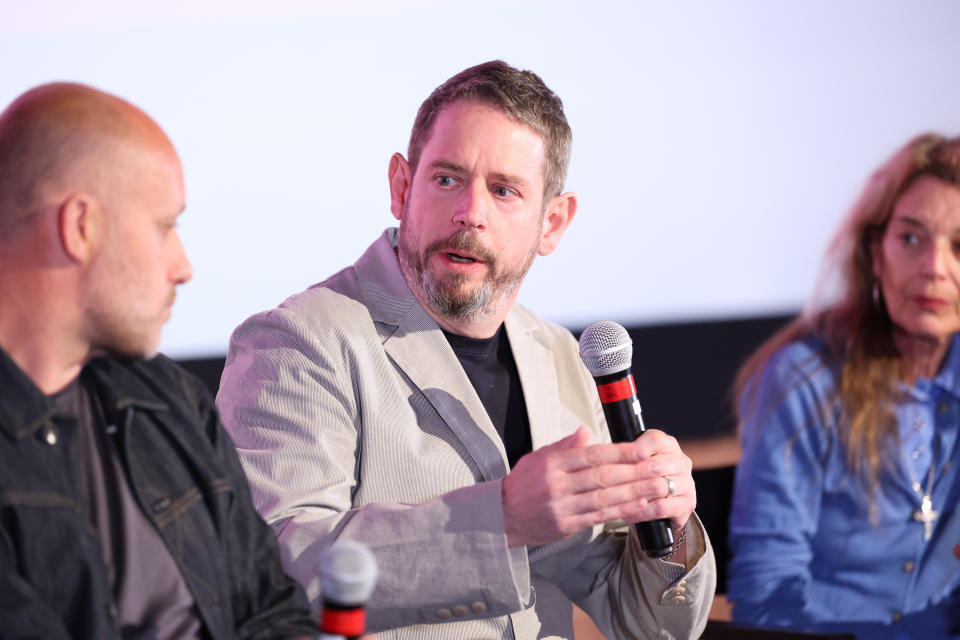
“This book came to me in 2020, during the lockdowns, and I could relate to being isolated from everyone around me,” Ben said of the story, which follows Russian aristocrat Count Alexander Ilyich Rostov (Ewan McGregor) who is sentenced to a life of house arrest within a hotel. “And that’s what really appealed to me, the humanity of this character, how he finds a new way to live inside this hotel and almost has a rebirth. He sort of discovers the man he was always meant to be, having lost everything.”
The series takes place over the course of thirty years, which created a unique set of challenges for Murrell as he sought to assemble a coherent arc for Rostov despite so much time passing so quickly. In many cases, the show’s solution was to treat time as a malleable substance that could be slowed down or sped up to reflect the character’s emotional states.
“It was inherent in the way that Ben had adapted it anyway, with these great time jumps,” Murrell said. “It’s always something you discover as you start putting it together. You discover when things feel longer, or when time speeds up. That can change and affect the rhythm of the narrative. I think the important thing was to spend time with the Count and understand his position emotionally and his feelings and understand who he was.”
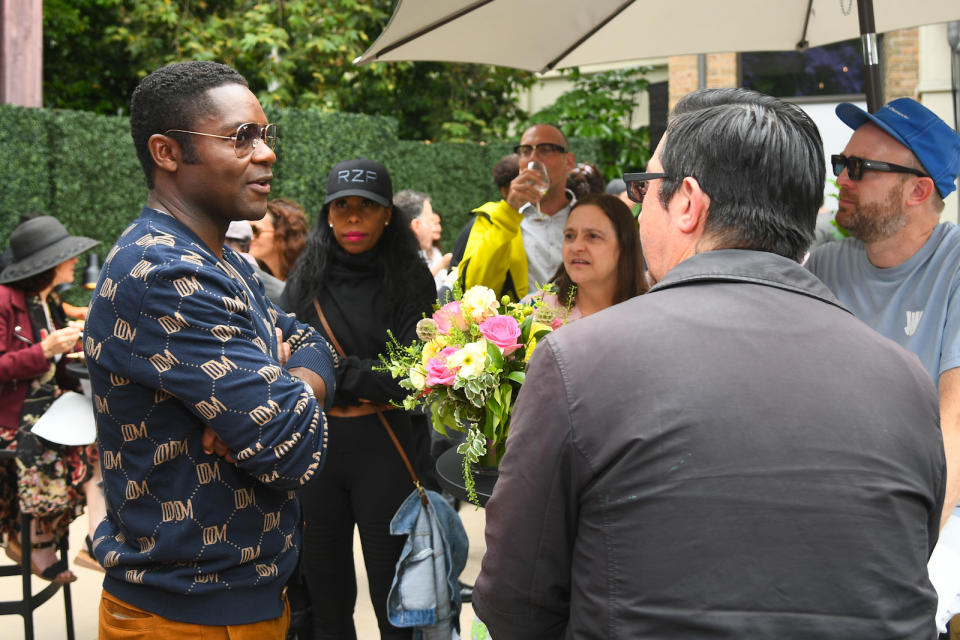
But while the characters’ perceptions of time might have been relative, the actual passage of it was not. That meant that Fowler had to be extra meticulous about ensuring the characters aged in a way that felt natural, often relying on many custom hair pieces to ensure that she could control the pace at which they subtly began to grey.
“Their aging was important, but it was kind of subtle,” she said. “We washed people out gradually in a way that I could control it. So nothing was ever permanent, down to the eyebrows and facial hair.”
It wasn’t long before everyone heard the blues a-callin’. Kelsey Grammer and his team of collaborators from last year’s hit “Frasier” revival — including director James Burrows, showrunners Joe Cristalli and Chris Harris, and production designer Glenda Rovello — sat down for a panel discussing their efforts to bring back the iconic sitcom character and why they agreed that the show had to be more than a nostalgia-inducing reboot.
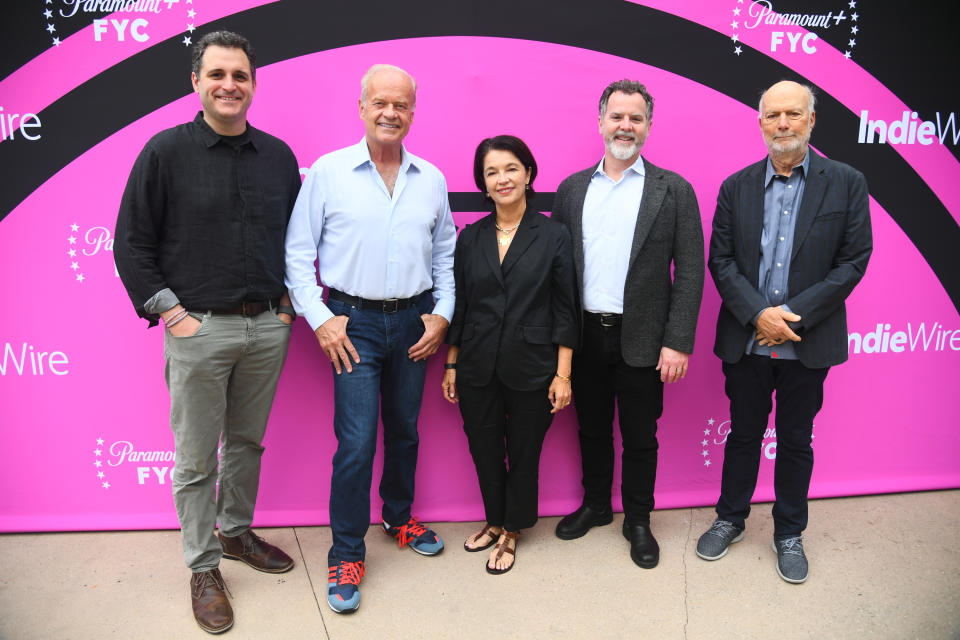
“The only conditions I had about it were that Frasier would have to be in a place where he’s advancing, still evolving,” Grammer said when asked what convinced him to bring his psychiatrist and sherry enthusiast back for a third time. “The other thing that influenced me was that people would approach me on the street and say ‘What are you doing these days, are you retired?’ Frasier always felt like a natural thing to go back to because he was always so alive, so interesting, and as a character, so willing to get back up again. He was always getting knocked down, he was always back in the game. That was always what I loved about him, and what I still love about him.”
Cristali and Harris took Grammer’s mandate and ran with it, taking Frasier Crane back to Boston but surrounding him with a new cast of characters including his adult son Freddy (now played by Jack Cutmore-Scott) and his previously unseen Oxford schoolmate Alan Cornwall (Nicholas Lyndhurst). Both showrunners explained that it was a blessing in disguise when their initial plans to reunited the original “Frasier” cast fell through because it forced them to take the show in a new direction rather than simply replay the greatest hits.
“When it became clear we couldn’t do the old cast, it opened up a lot of doors. Because we were never going to replicate the old show,” Cristali said. “We weren’t gonna re-do Niles and Frasier banter and have people be like ‘Whoa, that’s better than the original! So glad they did that! So instead we said, let’s find something new for him to do and find a new environment for him to thrive in.”
That ethos also fueled the show’s design choices. Frasier Crane’s luxurious Seattle apartment from the original series became of the most iconic sets in TV history by embodying a certain brand of ’90s luxury (save for one pesky chair), so Rovello knew that expectations for her new take on Dr. Crane’s living space would be high. Rather than re-create the past, she worked hard to ensure that her design felt like a natural evolution of the character’s tastes.
“I really admired the original show, design-wise. It was so elevated, compared to most sitcoms at the time,” she said. “Even though it’s been 30 years since that original set, it’s still the same character. So that was our approach. He’s in a different city, we saw the building that the son had made the choice of moving into, and the son is very down to earth. So that explained a lot. When Frasier moves next door, I could use the same architecture, but elevated so that it could support his character and his design choices.
But for all of the creative evolutions that went into the show’s revival, it was still able to capture the magic of the original “Frasier” thanks to some key links to the past. Sitcom legend James Burrows, whose storied resume includes the original “Frasier” and “Cheers” pilots in addition to virtually every other celebrated multi-camera sitcom from the past half century, returned to direct the first two episodes of the revival. He explained that after 40 years of making television with Grammer, the two men have a shared creative language that makes it easy to tackle any creative challenge that arises.
“I go where he goes,” Burrows said. “We’ve done a number of shows together. A sitcom takes about five days, and if I’m doing a show with Kelsey we take about two days. There’s a shorthand where I know what something needs and Kelsey takes what I know it needs and embellishes it beyond compare. So it’s a no-brainer for me when the phone rings and it’s Kelsey.”
Once Frasier had left the building, the husband-and-wife writing and producing team of Harriet Dyer and Patrick Brammall stopped by to discuss their hit sitcom “Colin from Accounts.” The meet-cute rom-com follows two Australians who slowly fall in love after bonding over a car accident that left a dog — which they name Colin from Accounts — paralyzed. The co-creators discussed how they knew they had a potential hit on their hands when show serendipitously came together in a matter of days after they spontaneously came up with the idea on a walk.
“We were walking our dog and tossing the idea around,” Brammall said. “I was working on something else, a far less successful show, and I said to Harry — she was climbing the walls and not working, and not used to not working — and I was like ‘Why don’t you write that thing that we talked about?’ So she went away, and came back with a script in like four days.”
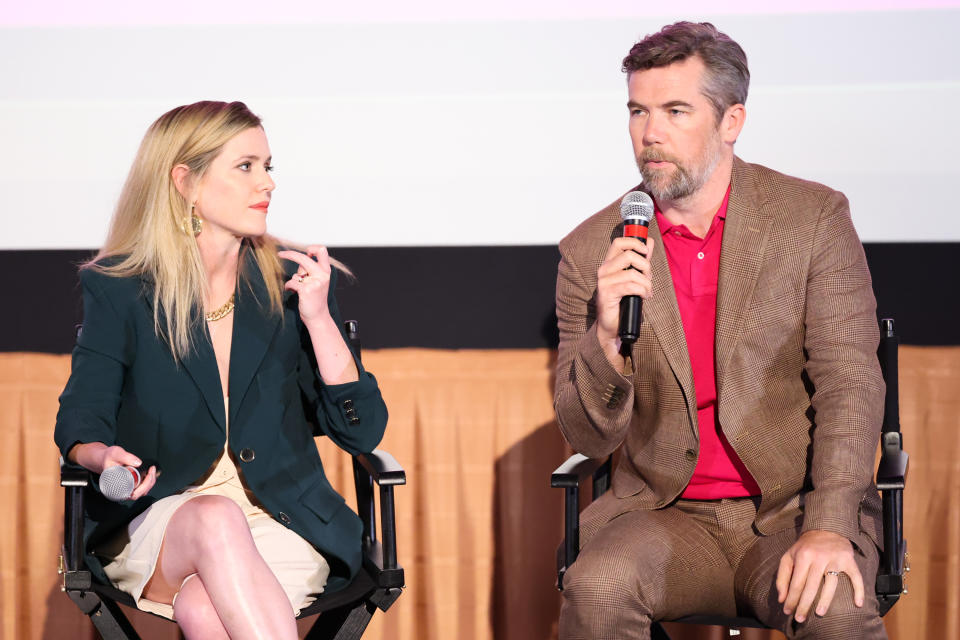
The show also forced Dyer and Brammall to evaluate their collaborative relationship, as producing a major television series comes with slightly different obligations than just being married. Dyer explained that while the couple is strongly united on both fronts, their professional relationship ended up being much nicer.
“We are very nice to each other as co-producers and co-writers and co-creators,” she said. “But boy, oh boy, if he made me a coffee at home and didn’t tell me it was ready when it was ready and then he goes ‘Oh, there’s your coffee’ and it’s cold, I don’t know. I’m not going to be that chill about it. He’d have to make me another one. And as a co-producer I’d be like, oh don’t worry about it!”
The day ended with a panel celebrating “Lawmen: Bass Reeves,” the Paramount+ series starring David Oyelowo as the eponymous frontier hero, who enjoyed a storied career as one of the first major Black deputy U.S. marshals in the 1800s after escaping slavery. Oyelowo, creator Chad Feehan, costume designer Isis Mussenden, production designer Wynn Thomas, and composer Chanda Dancy sat down to discuss the meticulous process they went through to present the most accurate possible version of the incredible true story on screen.
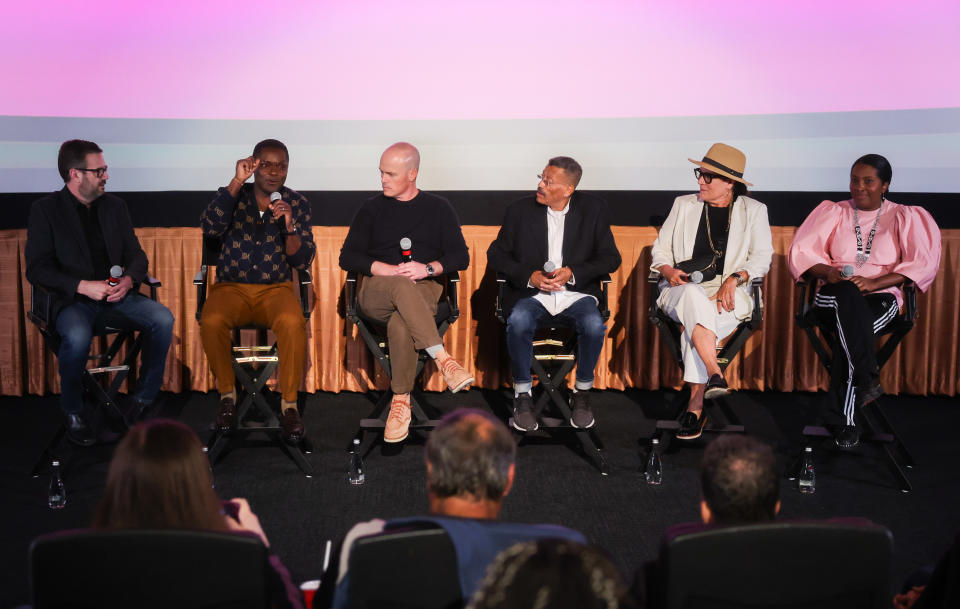
“I was shocked — having just taken a cursory look at who he was — that I didn’t know who he was,” Oyelowo said when asked about his first exposure to Reeves’ story over a decade ago, which prompted him to begin developing the project. “Especially as someone who had grown up loving Westerns and was desperate to see myself represented on screen generally speaking, let alone in this beloved genre. And then you go on to find out that he had a 32 year career. He went from enslaved to deputized as a deputy U.S. marshal, he spent time with Native Americans where he learned skills that he applied to being a U.S. marshal. He had a job that was famous for its mortality rates because of how dangerous the Indian territory was at that time. It was set up as just a great story to be told. So, to be perfectly frank, I was offended that it hadn’t been told. And that’s where my obsession with getting it told began.”
Like any period piece worth its salt, “Bass Reeves” was a heavy lift for its design team. Thomas, the legendary production designer behind many of Spike Lee’s masterpieces, explained that the massive amount of research that went into the show was the ultimate team effort.
“We surrounded ourselves with images from the time period, did some reading about the time period,” Thomas said. “Our offices are filled with files about not only just towns and cities and log cabins, but about the activities that the people would be doing from that time period. And the walls are covered up with images, so you can share those images with your directors and actors so they can react to things, and you’re obviously being inspired by those images.”
Mussenden said that those walls of images provided a constant source of inspiration for the entire costuming team, ensuring that everyone spent their work days surrounded by imagery from the era they were recreating.
“People would come to my costume office just to look around. Everyone would stop in, there were just a million images everywhere,” Mussenden said. “And I would tell my extras’ dressers, ‘If you can’t think of what to put them in, just go to the wall, find a character, and dress them like that. And that’s how you build in layers and layers of authenticity.”
But even the collaborators who weren’t being bombarded with images on their walls found themselves taking inspiration from his powerful story. Dancy explained that the show’s theme song came to her after looking at a single image of the iconic lawman.
“The very, very first step was looking at a picture of the real Bass Reeves on Wikipedia, staring into his eyes,” she said. “And I wrote the main title sequence from that picture.”
As the panel came to a close, Oyelowo saluted his collaborators with a tribute to craftsmanship that would have been equally accurate as a description of any of the other five Paramount shows being celebrated. He explained that the collaborative art form that is TV production only works when everyone respects each other’s work and allows the talents of others to make their own work better.
“The amazing thing for me — and this is one of the great advantages of being a producer on something and being there very early on — is you can set the table and say ‘The only way this is going to work is if you get people who are truly world class at what they do, and just trust them to do their job,'” he said. “Allow yourself to be a beneficiary of that, as what they do elevates what you bring.”
Launch Gallery: IndieWire's Consider This Event Returns to Celebrate Our Favorite TV Shows: See All the Photos
Best of IndieWire
'Song of the South': 14 Things to Know About Disney's Most Controversial Movie
The 55 Best LGBTQ Movies and TV Shows Streaming on Netflix Right Now
A History of Unsimulated Sex Scenes in 17 Cannes Films, from 'Mektoub' to 'Antichrist' to 'Caligula'
Sign up for Indiewire's Newsletter. For the latest news, follow us on Facebook, Twitter, and Instagram.

 Yahoo News
Yahoo News 
